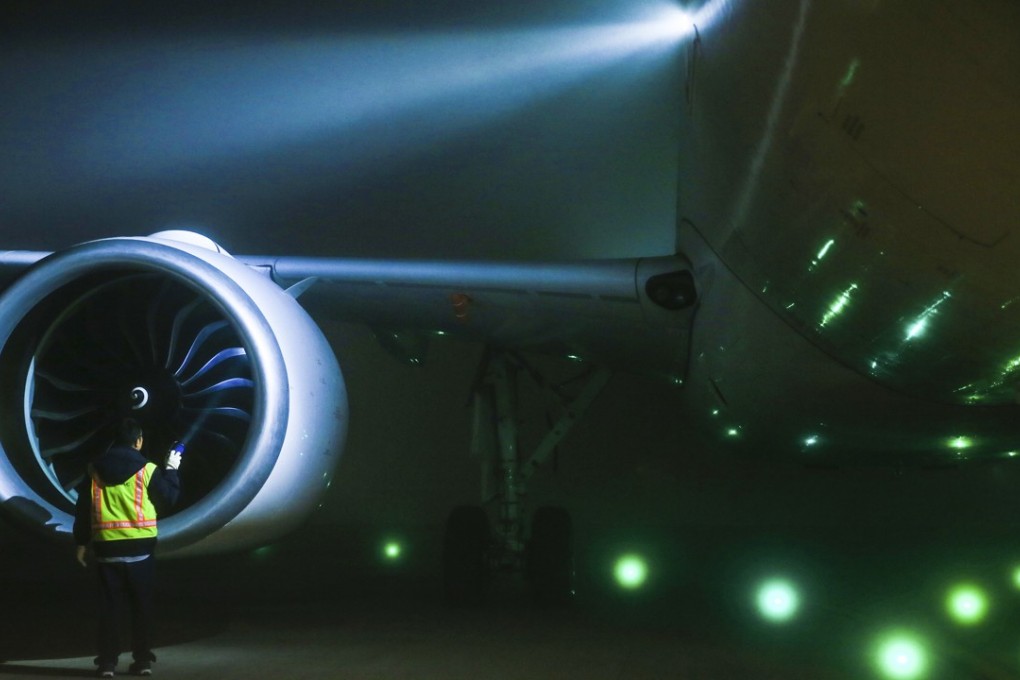China’s aviation industry has a steep climb to ‘Made in China 2025’ goals
- This is the final instalment of a series on China’s plan to move its industries up the value chain to reduce reliance on foreign technology
- China wants its commercial aircraft to supply 10 per cent of the domestic market and its jetliners to account for up to 20 per cent of the global market by 2025

When the C919, China’s indigenous long-haul airliner, successfully completed its maiden flight in May 2017, officials were quick to announce that the country was edging closer to clinching the “crown jewels” of the modern manufacturing industry: aircraft.
The one-hour-20-minute flight may only have taken five crew members about 200km from Shanghai and back, but it also carried the huge weight of a nation’s ambition to be a major player in the global aviation industry.
China’s aviation market is expected to overtake the US as the world’s largest by 2022, and the country is estimated to need over 7,000 planes in the next 20 years. Being able to make its own would not only help disentangle Beijing from the political complications of having to deal with the global manufacturing duopoly of Boeing and Airbus, but would also be a statement that it had the technological prowess to match its economic might.
“Building an aircraft brings together all the major disciplines in engineering. I think that’s why it’s so important to China. It’s the top of the mountain as far as complexity. That’s why it’s so strategic,” said Kevin Michaels, managing director of AeroDynamic Advisory, an aerospace and aviation consultancy.
“China is playing the long game, it’s not about the 2020s. China is looking at the next 20, 30 or 40 years.”
That ambition explains why the aviation industry was listed as one the key 10 areas of focus in the “Made in China 2025” (MIC2025) industrial plan, unveiled in 2015 with the aim of lifting the country’s industries up the value chain, replacing imports with local products and building global champions capable of taking on Western giants in global markets.
